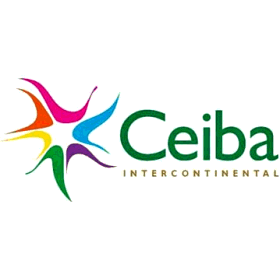The
reinstatement of the Malabo–Douala
connection by Ceiba Intercontinental is
injecting fresh momentum into Central Africa’s aviation landscape. The
airline’s return to Cameroon on 21 November 2025, after a two‑year
pause, instantly restores one of the region’s most strategically
important short‑haul corridors. For African aviation and tourism
professionals, this move does more than reintroduce a missing route: it
signals renewed confidence in regional traffic flows, commercial
viability and the long‑term relevance of cross‑border mobility across
the Gulf of Guinea.
The significance of this relaunch
reaches far beyond its operational simplicity. The Malabo–Douala
corridor is a vital connector linking two economies whose business
communities depend on quick, predictable access for corporate
engagements, oil and gas operations, regional logistics and
administrative travel. During the two‑year suspension, many travellers
had to rely on lengthy detours or costly charter arrangements to bridge a
gap that ideally requires less than an hour in the air. With Ceiba
Intercontinental resuming service, movement once again becomes
efficient, predictable and competitively priced.
For
the tourism sector, the restored link opens a renewed opportunity to
stimulate cross‑border leisure and cultural exchanges. Cameroon’s
commercial capital remains a crucial gateway for travellers exploring
the country’s coastal attractions, vibrant urban culture and access to
the west of the nation. Equatorial Guinea, meanwhile, continues to
expand its hotel infrastructure and promote Malabo as a destination for
conferences, exhibitions and cultural events. The return of direct air
service gives regional operators the ability to rebuild and redesign
multi‑country itineraries that previously depended on slow or fragmented
connections.
Ceiba Intercontinental’s comeback in
Cameroon also speaks to shifting dynamics in airline strategy across
Central Africa. The region is experiencing a gradual revival, with
carriers reassessing suspended routes and evaluating new opportunities
presented by rising demand. After years marked by operational
interruptions and regulatory challenges, airlines are increasingly
adopting targeted expansions backed by realistic assessments of market
potential. For Ceiba, returning to Douala allows the carrier to reassert
its presence in a market where competition remains manageable, yet
demand remains resilient.
This move also holds
important implications for the local aviation value chain. Every resumed
route activates a network of suppliers whose business depends on
aircraft movements. Ground handling teams gain regular rotation,
catering companies see improved volumes, and airport services—from fuel
supply to passenger processing—benefit from renewed activity. For many
smaller service providers operating in Douala and Malabo, steady
scheduled flights can significantly stabilise operational income.
Regional MRO players also stand to benefit as more aircraft begin
circulating through Central African airports with predictable
frequency.
In addition, the restored link offers room
for new forms of collaboration. Airlines in Central Africa increasingly
seek interline partnerships or informal coordination to optimise revenue
and network breadth. With Ceiba Intercontinental back in the market,
there is potential for new synergies with other operators serving
Douala, whether from West Africa, Central Africa or the Gulf. Such
partnerships contribute to smoother regional movements, better
protection for connecting passengers and more efficient use of fleet
resources.
Travellers themselves will feel the impact
quickly. For business communities working across the region, the
simplified journey reduces operational downtime, facilitates last‑minute
scheduling and helps align travel calendars for senior executives,
technicians and consultants who routinely shuttle between the two
cities. For the VFR segment—families and individuals who travel
frequently between Cameroon and Equatorial Guinea—the restored service
allows for smoother holiday and weekend trips without the complications
of multi‑stop routing.
From a strategic perspective,
the Malabo–Douala route reinforces Douala’s status as one of Central
Africa’s indispensable hubs. The airport continues to attract interest
from regional airlines seeking competitive positions within the dense
cross‑border market that spans Cameroon, Equatorial Guinea, Gabon, Chad
and the Republic of Congo. The reinstated route further consolidates
Douala’s role as a pivotal point for commercial growth and regional
development.
For Equatorial Guinea, the development
reinforces Malabo’s ambition to maintain a strong presence in regional
aviation. With renewed air access, the city can more effectively support
its growing business tourism market, which is steadily gaining
visibility through international conventions and sector‑specific events.
The national tourism strategy benefits considerably from stable
international links, offering visitors viable entry points for exploring
the country’s urban culture, coastal landscapes and protected natural
areas.
The broader regional context is also
noteworthy. Central Africa has historically faced limitations in
intra‑African air connectivity due to regulatory fragmentation, small
domestic markets and economic volatility. Each route reinstatement
contributes to addressing these long‑standing challenges. As airlines
rebuild post‑pandemic operations and adapt their strategies to emerging
demand patterns, reliable corridors such as Malabo–Douala become
essential pillars supporting the region’s recovery. The success of these
connections can encourage further reinvestment, additional frequencies
or expanded route networks across neighbouring countries.
For
professionals across the tourism and aviation sectors in sub‑Saharan
Africa, the return of this route is a reminder of how vital airlift is
to unlocking economic opportunity. It also emphasises the importance of
monitoring new developments and adjusting product offerings accordingly.
Hotels, DMCs, corporate travel managers and tourism boards can leverage
the restored link by tailoring marketing messages to audiences in both
markets, highlighting renewed accessibility and the ease of regional
movement.
As Ceiba Intercontinental rebuilds its
presence, stakeholders should consider how to integrate the revived
route into wider regional strategies. New multi‑country packages,
enhanced corporate travel agreements and cross‑border events can now be
planned with greater reliability. Even modest increases in capacity
along key routes can help stimulate competitive pricing, broaden
distribution channels and boost confidence among both leisure and
business travellers.
Ultimately, the reinstatement of
the Malabo–Douala connection reflects a broader trend of revitalisation
in Central African aviation. While the region continues to face
structural challenges, progress is undeniably taking shape. Each new or
returning route contributes to renewing investor trust, supporting
tourism recovery and strengthening the economic arteries that keep
cross‑border collaboration alive. With Ceiba Intercontinental now
operating again between Equatorial Guinea and Cameroon, the region takes
a meaningful step toward restoring and expanding the connectivity
required to support its next phase of growth.
